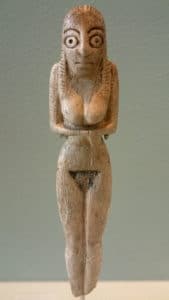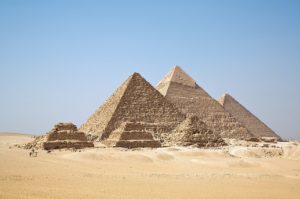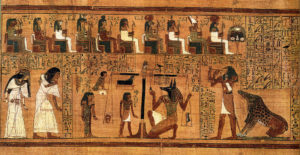The sovereign state of Egypt is a transcontinental country considered to be a regional power in North Africa, the Middle East and the Muslim world, and a middle power worldwide. Egypt’s economy is one of the largest and most diversified in the Middle East, and is projected to become one of the largest in the world in the 21st century. In 2016, Egypt overtook South Africa and became Africa’s second largest economy (after Nigeria). Egypt is a founding member of the United Nations, Non-Aligned Movement, Arab League, African Union, and Organisation of Islamic Cooperation.
History:
Prehistory and Ancient Egypt:
There is evidence of rock carvings along the Nile terraces and in desert oases. In the 10th millennium BCE, a culture of hunter-gatherers and fishers was replaced by a grain-grinding culture. Climate changes or overgrazing around 8000 BCE began to desiccate the pastoral lands of Egypt, forming the Sahara. Early tribal peoples migrated to the Nile River where they developed a settled agricultural economy and more centralized society.

By about 6000 BCE, a Neolithic culture rooted in the Nile Valley. During the Neolithic era, several pre-dynastic cultures developed independently in Upper and Lower Egypt. The Badarian culture and the successor Naqada series are generally regarded as precursors to dynastic Egypt. The earliest known Lower Egyptian site, Merimda, predates the Badarian by about seven hundred years. Contemporaneous Lower Egyptian communities coexisted with their southern counterparts for more than two thousand years, remaining culturally distinct, but maintaining frequent contact through trade. The earliest known evidence of Egyptian hieroglyphic inscriptions appeared during the pre-dynastic period on Naqada III pottery vessels, dated to about 3200 BCE.
A unified kingdom was founded c. 3150 BCE by King Menes, leading to a series of dynasties that ruled Egypt for the next three millennia. Egyptian culture flourished during this long period and remained distinctively Egyptian in its religion, arts, language and customs. The first two ruling dynasties of a unified Egypt set the stage for the Old Kingdom period, c. 2700–2200 BCE, which constructed many pyramids, most notably the Third Dynasty pyramid of Djoser and the Fourth Dynasty Giza pyramids.

The First Intermediate Period ushered in a time of political upheaval for about 150 years. Stronger Nile floods and stabilization of government, however, brought back renewed prosperity for the country in the Middle Kingdom c. 2040 BCE, reaching a peak during the reign of Pharaoh Amenemhat III. A second period of disunity heralded the arrival of the first foreign ruling dynasty in Egypt, that of the Semitic Hyksos. The Hyksos invaders took over much of Lower Egypt around 1650 BCE and founded a new capital at Avaris. They were driven out by an Upper Egyptian force led by Ahmose I, who founded the Eighteenth Dynasty and relocated the capital from Memphis to Thebes.

The New Kingdom c. 1550–1070 BCE began with the Eighteenth Dynasty, marking the rise of Egypt as an international power that expanded during its greatest extension to an empire as far south as Tombos in Nubia, and included parts of the Levant in the east. This period is noted for some of the most well known Pharaohs, including Hatshepsut, Thutmose III, Akhenaten and his wife Nefertiti, Tutankhamun and Ramesses II. The first historically attested expression of monotheism came during this period as Atenism. Frequent contacts with other nations brought new ideas to the New Kingdom. The country was later invaded and conquered by Libyans, Nubians and Assyrians, but native Egyptians eventually drove them out and regained control of their country.
Achaemenid Egypt:
In 525 BCE, the powerful Achaemenid Persians, led by Cambyses II, began their conquest of Egypt, eventually capturing the pharaoh Psamtik III at the battle of Pelusium. Cambyses II then assumed the formal title of pharaoh, but ruled Egypt from his home of Susa in Persia (modern Iran), leaving Egypt under the control of a satrapy. The entire Twenty-seventh Dynasty of Egypt, from 525–402 BCE, save for Petubastis III, was an entirely Persian ruled period, with the Achaemenid Emperors all being granted the title of pharaoh. A few temporarily successful revolts against the Persians marked the fifth century BCE, but Egypt was never able to permanently overthrow the Persians.
